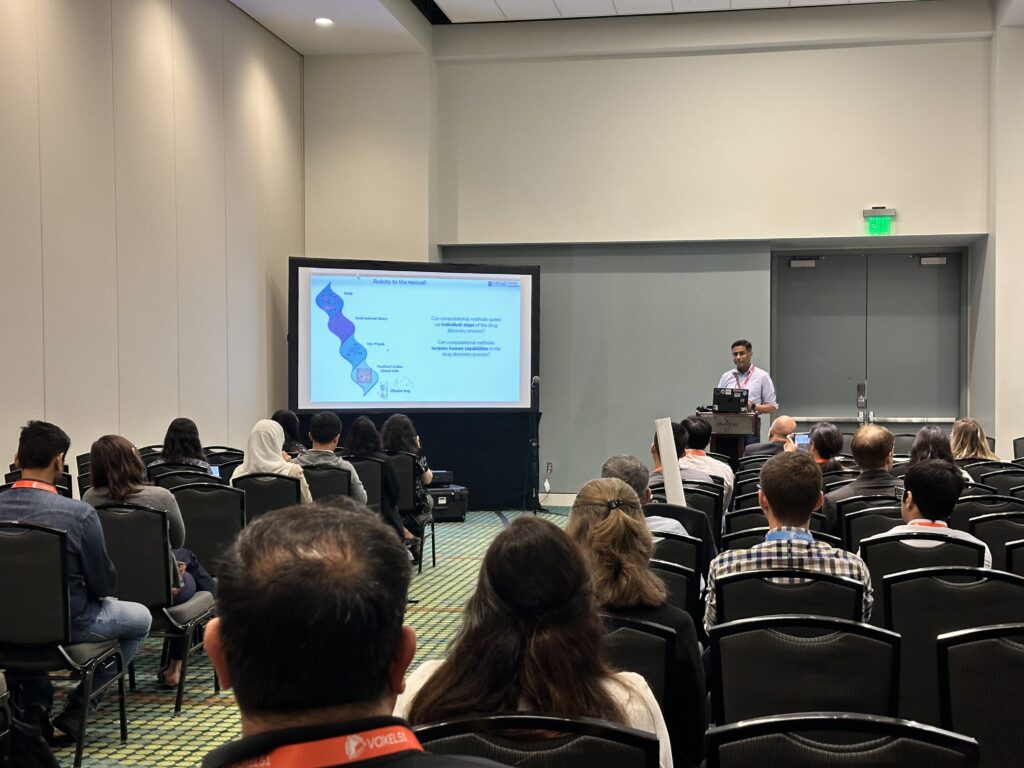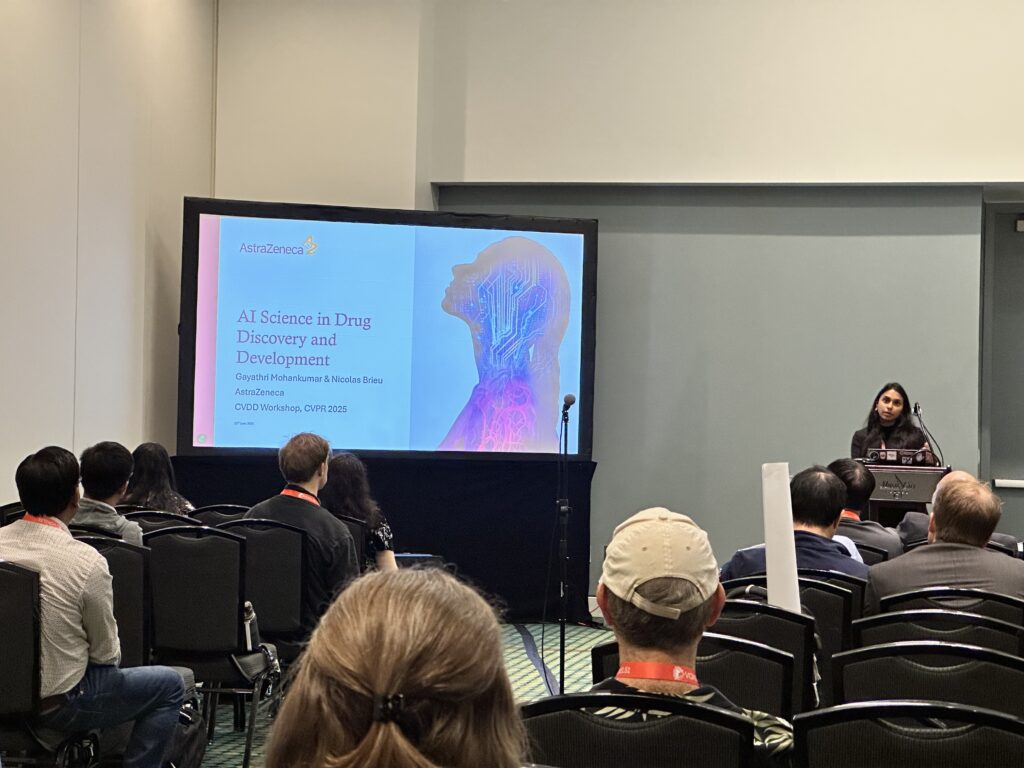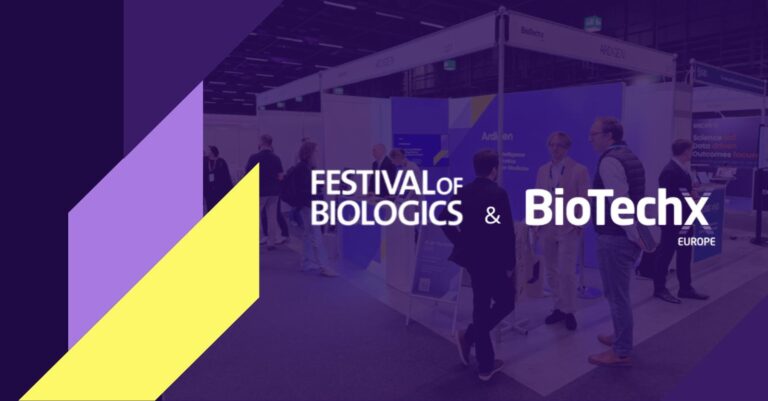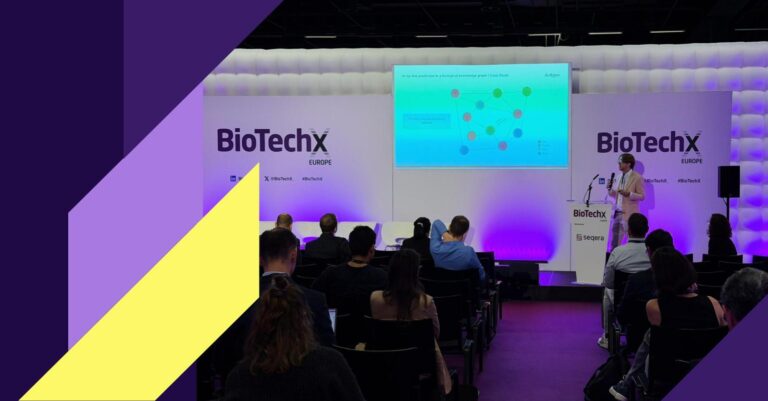On June 12, during CVPR 2025 in Nashville, Ardigen had the pleasure of co-organizing the workshop Computer Vision for Drug Discovery: Where Are We and What is Beyond? – a vibrant forum where AI and biomedical science came together to explore the future of life sciences.
The workshop opened with remarks from Dawid Rymarczyk, PhD and the first keynote was delivered by Shantanu Singh from the Broad Institute. He presented the Oasis consortium – an initiative supported by Ardigen – focused on assessing hepatotoxicity through cell pairing technologies in phenotypic drug discovery.
Shortly after, Adriana Borowa introduced the Kaggle challenge and presented the winning solution – a model for predicting molecular perturbations based on microscopy imaging data.
Throughout the day, experts from leading institutions shared their research and insights, including:
- Shantanu Singh – Broad Institute
- Gayathri Mohankumar & Nicolas Brieu – AstraZeneca
- Daniel Racoceanu – Sorbonne University
- Patrick Schwab – GSK
- Juan C. Caicedo – Morgridge Institute for Research
- Christina S. Leslie – Memorial Sloan Kettering Cancer Center
- Jean Fan – Johns Hopkins Biomedical Engineering
- Peter Horvath – ETH Zurich, INRIA, Helsinki, Szeged, Sophia Antipolis
What Did the Workshop Explore?
This workshop set out to bridge the gap between AI, computer vision, and life sciences, with a particular focus on how these disciplines intersect to accelerate drug discovery. From advanced imaging techniques like Spatial Transcriptomics and Cell Painting to Optical Pooled Screening, the sessions showcased how advanced tools are reshaping the way we understand biology and develop treatments.
A key theme emerged throughout the day: AI is no longer just a supportive tool it’s becoming a strategic partner in biomedical research, especially at the preclinical stage of drug discovery. Attendees explored how AI can guide experimental design, optimize decision making, and help researchers extract actionable insights from noisy, high-dimensional data.
Several standout presentations offered insights into emerging challenges and breakthroughs:
– Patrick Schwab (GSK) demonstrated how AI agents can prioritize and design perturbation experiments, streamlining early-stage research and helping scientists focus on experiments with the highest potential impact.
– Juan Caicedo (Morgridge Institute) introduced advances in foundational models for phenotypic screening, designed to generalize across a wide range of biological conditions offering a scalable approach to understanding cell behavior.
– Christina Leslie (MSKCC) addressed the limitations of conventional gene count matrices in spatial transcriptomics. She presented innovative solutions involving Gaussian splatting and discrete representation learning to overcome data sparsity and improve interpretability.
– Jean Fan (Johns Hopkins) tackled the challenge of inconsistencies in spatial transcriptomics platforms like Visium and Xenium, highlighting how non-specific probe effects can lead to downstream confusion and offering practical strategies to mitigate these issues.
-Peter Horvath (ETH Zurich, INRIA, etc.) shared novel techniques in spatial proteomics and single-cell analysis that extend beyond morphology and gene expression, pushing the boundaries of how we profile complex tissue environments.
As the sessions unfolded, a common message resonated: transformative progress is increasingly happening at the intersection of computational and biological sciences. Real breakthroughs require deep collaboration across disciplines and this workshop served as a space to strengthen those connections.



For the CVPR Community
For computer vision researchers, this was more than an academic gathering, it was an invitation to apply their skills where they matter most: human health. The message was clear, it’s not just about better models anymore. It’s about building tools that can change lives.
Why It Matters to Ardigen
At Ardigen, we believe that AI can accelerate discoveries in precision medicine. Co-organizing this workshop is part of our ongoing effort to connect science and technology in ways that create real-world solutions. It’s also about bringing people together – from both AI and life sciences – to collaborate, challenge each other, and push the boundaries of what’s possible.
We’re excited to keep this momentum going and continue shaping the future of drug discovery together.
Explore the workshop site: https://cvdd-cvpr25.github.io/





